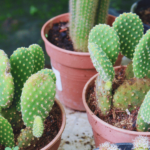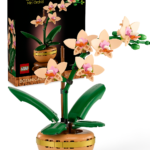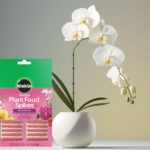The Variegated Philodendron Micans is known for its trailing growth habit, making it an excellent choice for hanging baskets or cascading down shelves. This houseplant is a true stunner, with its lush green leaves adorned with beautiful variegation. With its elegant and vibrant appearance, it adds a touch of nature’s beauty to any indoor space.
Green and cream shades combine to create a striking contrast in its heart-shaped leaves. Not only is it appealing, but this plant is also easy to care for, making it a popular choice among plant enthusiasts. We will delve into everything you need to know about the philodendron micans variegated, from its care requirements to its propagation methods.
What Is A Variegated Philodendron Micans?

Variegated Philodendron Micans is a stunning variety of Philodendron Micans with variegated foliage. The leaves of this plant display a mesmerizing array of colors, including green, purple, and silver, adding to its allure. It can be grown as a trailing vine and is a popular choice for indoor gardens.
To care for a variegated means philodendron, it is recommended to provide it with bright, indirect light and ensure that its soil remains moist but not waterlogged. The plant prefers warm temperatures and high humidity, so misting the leaves or placing it near a humidifier can help create a suitable environment.
| Botanical Name | Philodendron hederaceum var. hederaceum |
| Common Name | Philodendron micans, velvet-leaf philodendron |
| Family | Araceae |
| Light Needs | Bright, indirect light |
| Height and Width | 8 to 24 inches |
| Growth Rate | Fast |
| Soil Type | Loamy, moist but well-drained |
| Soil pH | Acidic |
| Bloom Time | Spring, summer |
| Flower Color | Green, white |
| Hardiness Zones | 10a, 10b, 11a, 11b |
| Temperature | 60-80 °F (16-27 °C) |
| Humidity | 50-80% |
| Toxicity | Toxic to cats, toxic to dogs |
Philodendron Melanochrysum vs Philodendron Micans
Philodendron Micans need bright to medium indirect light but should avoid prolonged periods of direct sunlight to prevent burning of the delicate leaves, causing discoloration and crispy edges. While Philodendron Micans can tolerate low light conditions, their leaves may grow smaller, and the plant can become leggy in such conditions. Thus, it’s best to place this plant in a bright location, close to a window but not in direct sunlight.
Philodendron Hederaceum vs Philodendron Micans
Two popular houseplants, Philodendron Hederaceum, and Philodendron Micans, often get confused, but they differ in several ways. Philodendron Hederaceum, known as Heartleaf Philodendron, features heart-shaped glossy leaves with a vibrant green color. So, Philodendron Micans is recognized by its velvety, iridescent leaves that range from deep green to rich coppery tones.
While both plants share similar care requirements such as low to moderate light and regular watering, their appearances set them apart. The trailing vines of the Heartleaf Philodendron make it ideal for hanging baskets or climbing up a moss pole, while the more compact growth habit of the Philodendron Micans suits tabletop containers or terrariums.
How Many Varieties Of Philodendrons Are There?
While I couldn’t find an exact number, philodendrons are a large genus comprising over 480 species. There are also many cultivars and variations within these species, resulting in a wide variety of philodendron plants available.
Different sources may provide different numbers, but it is safe to say that there are many varieties of philodendron plants to choose from.
Why Are Variegated Philodendron Micans A Perfect Indoor Plant?

The Variegated Philodendron Micans hold a special place in the hearts of indoor plant enthusiasts for several reasons. First, its velvety foliage and striking variegation make it a captivating addition to any living space. Whether you place it on a shelf, in a hanging basket, or as part of a lush indoor arrangement, its presence is sure to draw attention.
This philodendron cultivar is also well-suited for indoor cultivation. It thrives in bright, indirect light, making it perfect for homes and offices with filtered sunlight. Additionally, the Micans variegated variety is low-maintenance compared to some other houseplants. It can tolerate occasional neglect and does not require constant watering or a strict watering schedule.
How to care for philodendron micans?

Discover the essential care tips for your variegated micans. Keep this stunning plant healthy and thriving with proper watering, lighting, and fertilizing techniques.
If you’re a houseplant enthusiast, the Variegated Philodendron Micans is definitely a beauty that you should have in your collection. With its striking variegated leaves and trailing vines, this plant can brighten up any space.
But to keep your philodendron micans variegated happy and thriving, it’s important to understand and provide the care it needs.
How much light does a Philodendron Micans need?
Philodendron Micans need bright to medium indirect light, and while they can tolerate low light conditions, it’s best to avoid low light as it can cause the plant to grow smaller and become leggy. While Philodendron Micans can tolerate low light conditions, their leaves may grow smaller, and the plant can become leggy in such conditions. So, it’s best to place this plant in a bright location, close to a window but not in direct sunlight.
Philodendron Micans Soil Requirement
The right soil mix is essential for the micans variegated to thrive. It prefers a well-draining soil mix that retains some moisture while allowing excess water to flow out. A suitable soil mix can be a combination of standard potting soil, perlite, and peat moss. This mix will help prevent soil compaction and maintain adequate moisture levels for your plant’s roots.
How often to water your Variegated Philodendron Micans?
Proper watering is crucial for the health of your mican variegated. Overwatering or underwatering can lead to root rot or dryness. To keep your plant hydrated, it’s essential to water it when the top inch of the soil feels dry.
However, make sure not to let your plant sit in standing water as it can cause root rot. Remember, it’s better to be underwater than overwater your Philodendron Micans.
How to fertilize Variegated Philodendron Micans?
To fertilize Variegated Micans, a balanced approach is recommended. Fertilize your philodendron micans variegated during the active growing season, which is spring and summer. Avoid fertilizing during the dormant period in winter.To meet the fertilizer requirements of philodendron micans, opt for a balanced liquid fertilizer diluted to half-strength. Applying this solution every 4-6 weeks during the growing season will provide essential nutrients without overwhelming the plant.
Philodendron Micans Temperature
The Variegated Philo Micans thrive in average room temperatures between 60-80 °F (16-27 °C). It can tolerate lower temperatures, but sudden drops and cold drafts should be avoided. Keep your plant away from doors, windows, or vents where temperature fluctuations can occur. Consistent warmth will help your Philodendron Micans grow and stay healthy year-round.
Philodendron Micans Humidity
Native to tropical regions, the micans velvet halo enjoys higher humidity levels. The ideal humidity for this plant is around 50-80%. If the air in your home is dry, you can increase humidity by misting the leaves with water, placing a humidifier nearby, or using a pebble tray filled with water. Consistent humidity will prevent leaf browning and keep your Philodendron Micans looking lush.
Variegated Philodendron Micans Maintenance & Pruning
Regular maintenance and pruning will help your philodendron mican variegated maintain its beautiful appearance. Remove any yellow or wilted leaves to prevent the spread of diseases. If your plant becomes leggy or , you can trim the vines back to encourage bushier growth. Pruning the trailing vines will also help your Philodendron Micans maintain its compact shape and prevent it from becoming.
When To Repot Philodendron Micans?
Your philodendron micans halo variegated will appreciate being repotted every 1-2 years. Signs that it’s time for repotting include roots outgrowing the current pot or the soil becoming excessively compacted. When repotting, choose a pot that is 1-2 inches larger in diameter than the current one and use fresh potting soil. Repotting in the spring or summer will give your Philodendron Micans a fresh start and allow its roots to grow in its new home.
How To Propagate Philodendron Micans?
Ready to start propagating your Philodendron Micans? Follow these simple steps to increase your plant collection:
- Select the Right Stem: Look for a healthy stem with at least two pairs of leaves. Make sure the stem is free from pests or diseases.
- Prepare your Tools: Gather a clean pair of gardening shears or scissors, a container with water or a small pot with well-draining soil, and rooting hormone (optional but can’t hurry the process).
- Take the Cutting: Using your sharp tool, make a clean cut below a leaf node. This is where the roots will form. Remove the lowest set of leaves, leaving two leaves at the top of the stem.
- Encourage Root Growth: If using rooting hormone, dip the cut end into the powder before planting. Place the cutting in water or into the potting mix, making sure the bare node is covered. Keep the soil moist but not wet.
- Provide Adequate Light and Humidity: Place your cutting in a warm area with bright, indirect light. Maintain the ideal humidity levels discussed earlier to encourage successful root development.
- Check Growth: Over the next few weeks, keep a close eye on your cutting for signs of root growth. You can tug on the stem to assess root development. Once roots are visible, you can transplant the new plant into its permanent pot.
Common Pests Affecting Variegated Philodendron Micans
Variegated Philodendron Micans, like other houseplants, can be susceptible to various pests. Some common pests that can affect variegated halo micans include:
- Spider mites: These tiny pests can create webbing on the leaves, causing yellowing, stippling, and leaf drop. Spider mites thrive in dry conditions.
- Mealybugs: Mealybugs are small, soft-bodied insects that feed on plant sap. They often appear as white, cottony clusters on the leaves and stems. Mealybugs can cause leaf distortion, yellowing, and a sticky residue on the plant.
- Aphids: Aphids are small, pear-shaped insects that can infest plants’ leaves and stems. Aphids may also leave a sticky residue behind.
- Scale insects: Scale insects resemble small, raised bumps on the plant’s leaves and stems. They can vary in color and size and may feed on the sap, causing yellowing and weakening of the plant.
Common Problems With Philodendron Micans
Although the Variegated Philodendron Micans is generally easy to care for, like any plant, it can sometimes encounter a few common problems. Understanding these issues and their solutions can help you maintain a healthy and thriving plant. In this section, we will discuss three common problems that you may encounter with your Philodendron Micans: curling leaves, plant leaves falling off, and mushy stems.
Curling Leaves
One of the common problems that you may notice with your Philodendron Micans is curling leaves. There could be a few reasons behind this issue:
- Low humidity: Philodendron Micans thrive in environments with higher humidity levels. If the surrounding air is dry, their leaves may start to curl. To solve this problem, try misting the leaves or placing a humidifier near the plant.
- Overwatering: Overwatering your Philodendron Micans can lead to root rot, which may cause the leaves to curl. To prevent this, make sure to let the topsoil dry out between watering sessions. Feel the soil with your finger and water only when it feels dry.
- Inadequate light: Insufficient light can also cause the leaves to curl. Ensure that your Philodendron Micans is placed in a location with bright, indirect light. Avoid direct sunlight as it can scorch the leaves.
Plant Leaves Falling Off
If you notice that leaves are falling off your Philodendron Micans, it is important to address the issue. Here are a few possible causes:
- Underwatering: Lack of water can cause the leaves to dry out and fall off. Ensure that you water your plant , allowing the soil to dry between each watering session.
- Too much direct sunlight: Exposing your Philodendron Micans to direct sunlight for extended periods can lead to leaf burn and cause them to drop off. Move the plant to a spot with bright, indirect light to avoid this problem.
- Pest infestation: In some cases, leaves falling off could be a result of pests such as spider mites or mealybugs. Inspect your plant for signs of infestation and take appropriate measures to cut the pests.
Mushy Stems
Finding mushy stems on your Philodendron Micans can be about, but it is a sign of overwatering or root rot. To address this problem:
- Check the soil moisture: Ensure that you are not overwatering your plant. Allow the soil to dry out between watering sessions, and adjust your watering frequency.
- Inspect the roots: remove the plant from its pot and examine the roots. If you notice dark, slimy roots or a foul odor, root rot may be present. Trim away the affected roots and repot the plant in fresh, well-draining soil.
Features of variegated philodendron micans

Variegated Philodendron Micans is a stunning variety known for its mesmerizing features. The plant has the following key features:
- The leaves of Variegated Micans have a soft and velvety texture, which gives them a unique and luxurious appearance.
- This plant has a trailing growth habit, making it a perfect choice for hanging baskets or training on a trellis or support.
- The leaves display a mesmerizing array of colors, including shades of green, purple, and silver. The variegated pattern adds further visual interest to the plant.
- The leaves of the variegated micans are heart-shaped, adding a touch of elegance to its appearance.
- Philodendron Micans is generally considered to be a low-maintenance plant. It does well in a variety of light conditions, but indirect bright light is ideal. The plant appreciates occasional wiping of the leaves to remove dust and maintain their health.
Is the Philodendron Micans pet safe?
Philodendron micans is toxic to pets like cats and dogs due to the calcium oxalate crystals it contains. Ingesting this plant can cause discomfort and irritation. To ensure your pet’s safety, keep philodendron micans out of their reach or consider pet-friendly houseplants instead. Monitor your pet closely if ingestion occurs and contact a veterinarian if necessary.
FAQs On Variegated Philodendron Micans
How Big Do Philodendron Micans Get?
When it comes to size, the Philodendron Micans does not grow large. As a trailing plant, it reaches a greatest height of around 12 to 24 inches. Its compact size makes it an excellent choice for smaller spaces, such as apartments or dorm rooms. Moreover, its cascading vines can be trained to climb or hang from a basket, adding a touch of greenery to any unused vertical space.
Is Variegated Philodendron Micans Albo?
No, variegated philodendron mican is not the same as philodendron micans albo. They are different variations of the philodendron micans plant.
Is philodendron micans rare?
Philodendron micans is not considered a rare plant. It can be easily found at many nurseries and online stores. However, the variegated version may be harder to find and more expensive.
Are variegated Micans real?
Yes, variegated Micans (Philodendron Micans) are real plants. The term “variegated” refers to the variation in color or pattern on the leaves. These plants are highly sought after by plant enthusiasts and collectors. The care requirements for variegated Micans are similar to those of regular Micans.
How much is variegated philodendron micans?
The cost of variegated philodendron micans can vary depending on the seller and location. A small plant typically ranges from $20 to $30, while larger plants can be priced at $50 or more. Rare variations may even cost $100 or higher. It’s important to purchase from a reputable seller and provide proper care for your plant’s longevity.
Is variegated philodendron micans albo?
Variegated philodendron micans are not albo as they have different leaf patterns. While variegated Philo micans have green and silver variegation, albo philodendrons have white or cream-colored variegation. Variegated philodendron mican is a great indoor plant for low to bright indirect light conditions.
How do you grow variegated Micans?
To grow variegated Micans, provide it with bright, indirect light. Keep the soil moist but not waterlogged. Use a well-draining soil mix. Fertilize monthly during the growing season with a balanced houseplant fertilizer. Regular pruning helps maintain fullness and prevents legginess.
Conclusion
The Variegated Philodendron Micans is a stunning and versatile plant that brings beauty and charm to any space. Its patterned leaves and trailing vines create an appealing and dynamic display. Plant enthusiasts of all levels will appreciate its low-maintenance nature and ability to thrive in a variety of lighting conditions.
This plant will not only make your home or office more appealing, but it will also improve air quality. Embrace the beauty of nature with the philodendron mican variegated and enjoy the benefits it brings.
You may also like WHITE PRINCESS PHILODENDRON







